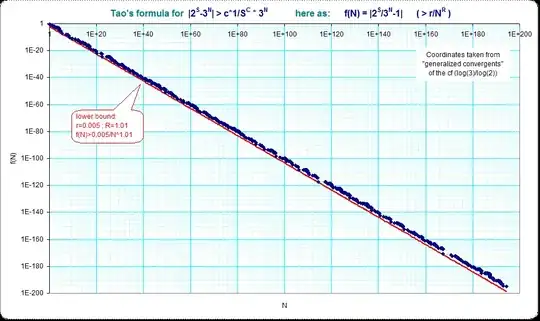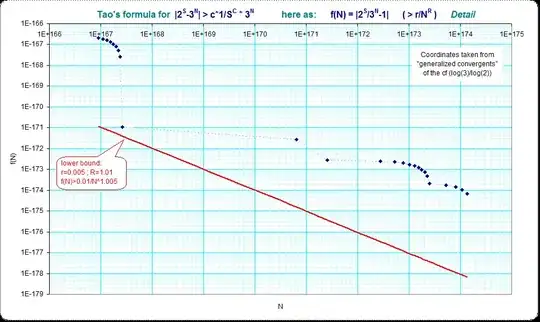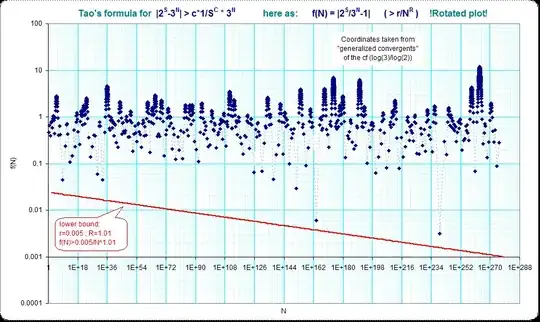In his blog Terence Tao discusses the distance between powers of 2 and 3 and presents the following corollary:
Corollary 4 (Separation between powers of {2} and powers of {3})
For any positive integers {p, q} one has
$$ \displaystyle |3^p - 2^q| \geq \frac{c}{q^C} 3^p$$
for some effectively computable constants {c, C > 0} (which may be slightly different from those in Proposition 3).
What does he mean with "... effectively computable constants ... " ?
I've only a guess so far based on the inspection of the curve for $p$ and $q$ (=$N$ and $S$ in my usual notational style) using $p$ from the first hundred or so of the convergents of the continued fraction of $\log_2 (3)$ giving data for $p$ up to $1e175$ (only convergents where $2^q > 3^p$ are used).
From this I guess for instance $c=0.005$ and $C=1.01$. But those guesses might be much too crude.
I already presented an older guess in a MO-answer of mine but which seems even cruder.
So my question:
Q: How can one compute that constants?
pictures making my guess. Used only that cases where $2^S > 3^N > 2^{S-1}$ that means also from the original convergents of the continued fractions only each second one.
Image for the whole tested interval:

Detail for the smaller leading interval:

Detail for the smaller critical interval at $N \approx 1e166$:

Picture rotated to make comparision better visible. Note that the labeling of the axes are now no more correct, and the apparent numbers $N$ are scaled due to rotation (note: the logs of all values were rotated using $\cos(),\sin()$ by $45$ deg).
